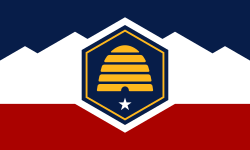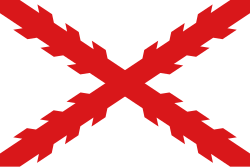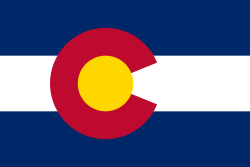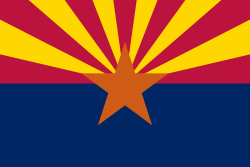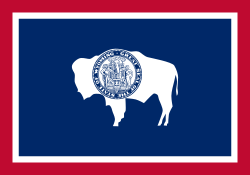Alta California
| Övre Kalifornien | ||||
| Alta California (spanska) Upper California (engelska) | ||||
| ||||
| Karta över självständiga Mexiko innan 1848, med Alta California rödfärgad. | ||||
| Huvudstad | Monterey | |||
| Bildades | 4 oktober 1824 | |||
| – bildades ur | Las Californias | |||
| Upphörde | 30 december 1836 | |||
| – uppgick i | Californias Department | |||
| Folkmängd | 85000 (1847) | |||
| Idag del av | - - - - - - | |||
Alta California (svenska: Övre Kalifornien) var en provins och ett territorium i vicekungadömet Nya Spanien, och senare ett territorium och departement i det självständiga Mexiko. Territoriet bildades 1769 av de norra delarna av provinsen Las California och omfattade vad som nu är de amerikanska delstaterna Kalifornien, Nevada, Utah, Arizona, västra Colorado samt sydvästra Wyoming.
Efter Mexikos frigörelse från Spanien i det drygt decennielånga mexikanska frihetskriget 1821 kom området att enligt den mexikanska konstitutionen 1824 räknas som ett territorium under Mexiko, och räknades alltså inte till Mexikos delstater.
Under en kort period utropades republiken Kalifornien, innan territoriet föll under USA:s kontroll under det mexikansk–amerikanska kriget (1846–1848) och upphörde officiellt att existera när den amerikanska delstaten Kalifornien bildades den 9 september 1850.[1]
Referenser
- ^ ”California” (på engelska). World Statesmen. http://www.worldstatesmen.org/US_states_A-D.html#California. Läst 9 juli 2016.
Media som används på denna webbplats
Flag of California. This version is designed to accurately depict the standard print of the bear as well as adhere to the official flag code regarding the size, position and proportion of the bear, the colors of the flag, and the position and size of the star.
The flag of Utah (2024-present). This is the final design submitted for consideration to be adopted as a new state flag of Utah. The design evokes images of snowy mountains and red rocks to represent the geography of Utah, the beehive represents "Industry" (the state's slogan) and Utah's nickname as "the Beehive State".
© Giggette / Wikimedia Commons, CC BY-SA 3.0
Political divisions of independent México in 1824, in the present day U.S. and México.
Författare/Upphovsman: Ningyou., Licens: CC BY-SA 3.0
Flag with the cross of Burgundy (saltire). Also named Cross of Burgundy flag. It was used in the Catholic Monarchy and in its viceroyalties such as New Spain and Peru. It was also used by Spain as a military or king's prosonal flag. Used by the Carlist movement.
Republiken Kalifornien. Rekonstruktion av den första flaggan.
Flag of the State of Nevada. The flag is described in Nevada Revised Statutes Chapter 235, Sec. 20 as follows: The body of the flag must be of solid cobalt blue. On the field in the upper left quarter thereof must be two sprays of Sagebrush with the stems crossed at the bottom to form a half wreath. Within the sprays must be a five-pointed silver star with one point up. The word “Nevada” must also be inscribed below the star and above the sprays, in a semicircular pattern with the letters spaced apart in equal increments, in the same style of letters as the words “Battle Born.” Above the wreath, and touching the tips thereof, must be a scroll bearing the words “Battle Born.” The scroll and the word “Nevada” must be golden-yellow. The lettering on the scroll must be black-colored sans serif gothic capital letters.
Författare/Upphovsman: Milenioscuro, Licens: CC BY-SA 4.0
Locator map of Alta California territory in Mexico (1824)




